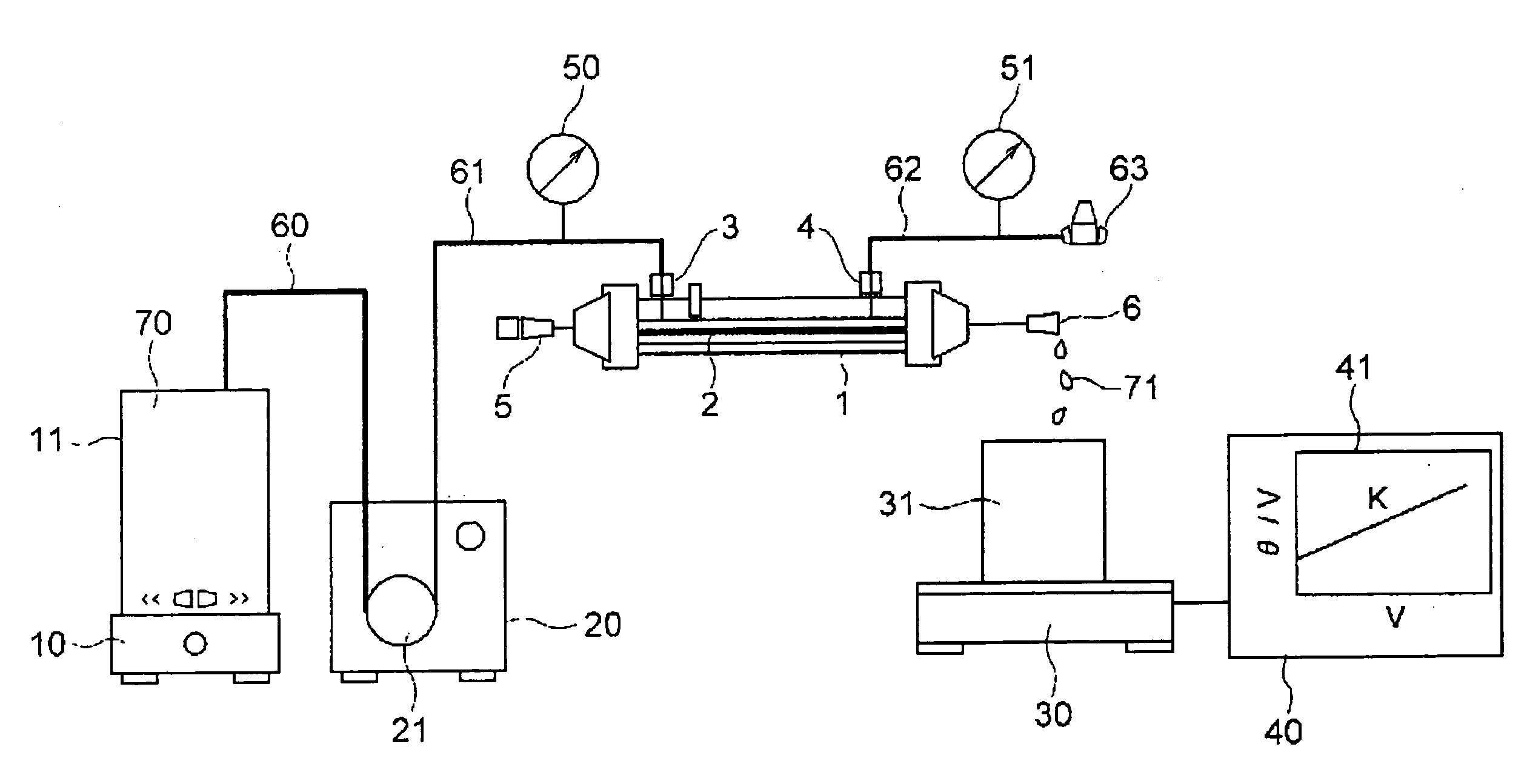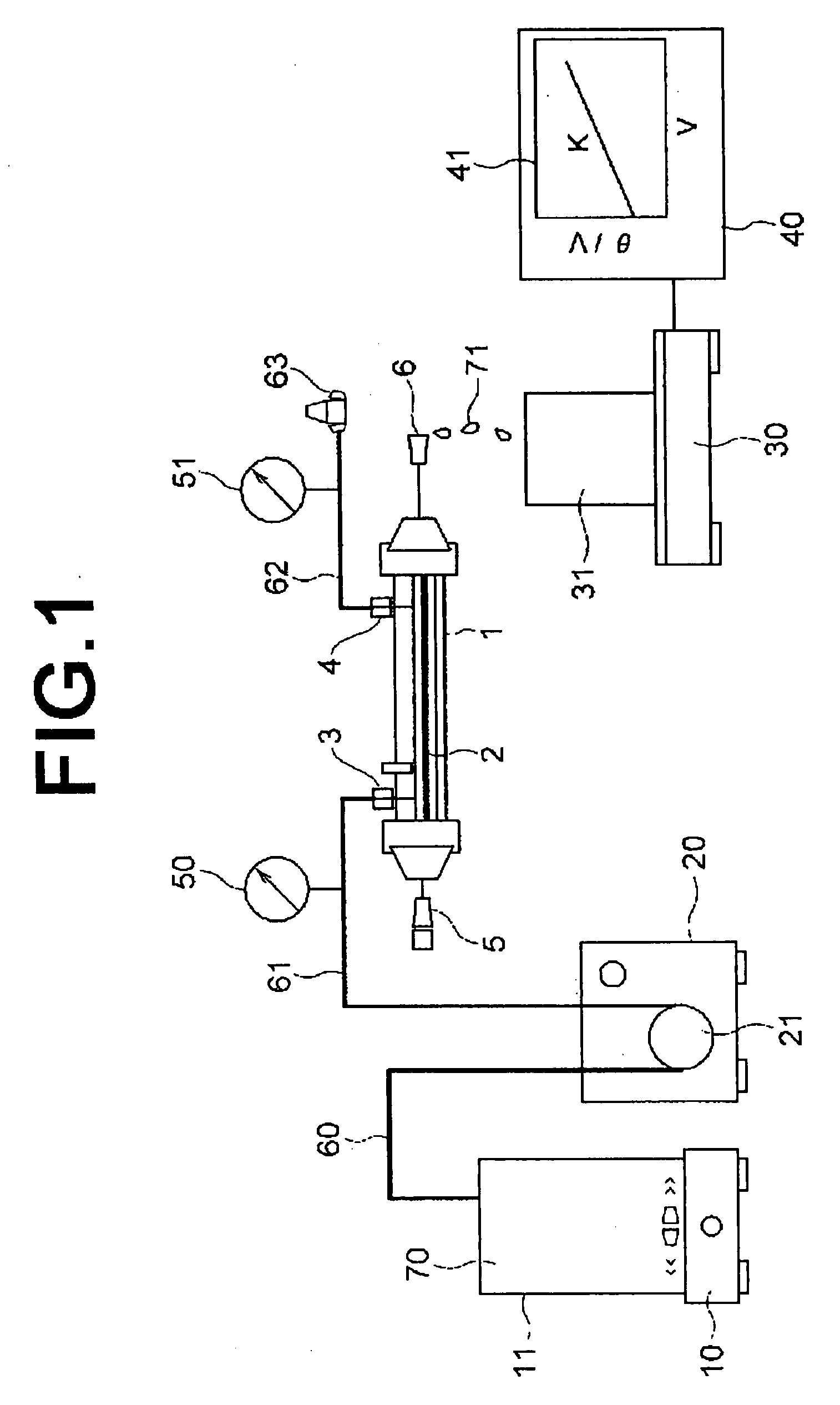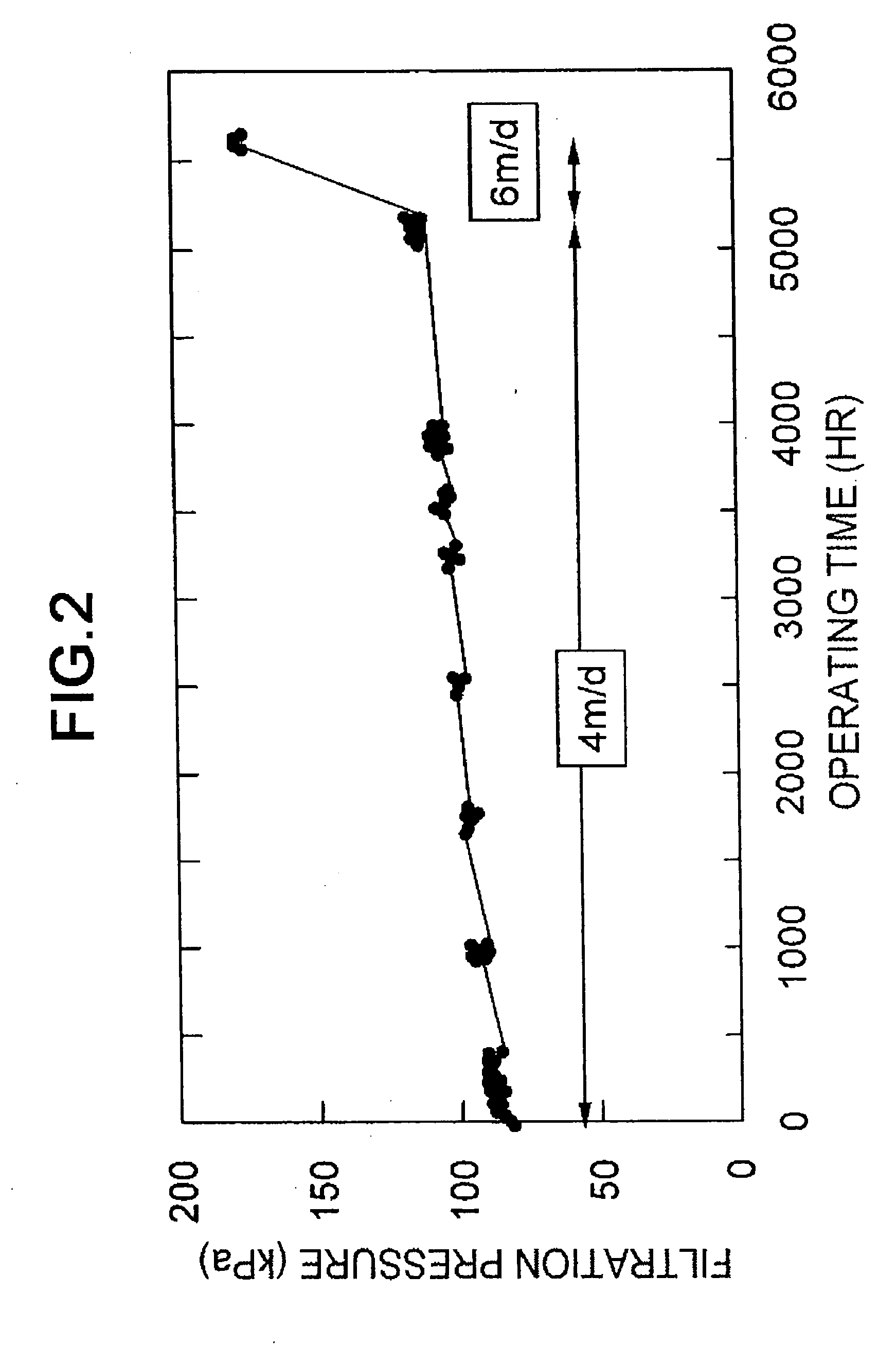Method of Estimating Stable State Membrane Filtration Flux
a membrane filtration flux and stable state technology, applied in the field of method of estimating stable state membrane filtration flux, can solve the problems of reducing flux rapidly or gradually, being completely impossible to estimate the stable state flux value in advance, and the method cannot be used in a very narrow water quality rang
- Summary
- Abstract
- Description
- Claims
- Application Information
AI Technical Summary
Benefits of technology
Problems solved by technology
Method used
Image
Examples
example 1
[0059]For a certain sand filtration facility for river water, before constructing a new membrane filtration plant for filtering wastewater during backwashing, the maximum stable flux value was estimated. The turbidity of the wastewater was relatively high at 100 degree. It was decided to select a hollow fiber type precise filtration membrane module made by Asahi Kasei Chemicals Corporation (model number UNA-620A, membrane area 50 m2) as the membrane module, which was considered to be suitable from the required throughput and so on, and the stable operating time period up to chemical cleaning was set to 6 months. Moreover, a total of 30 minutes comprising 28.5 minutes of filtration operation, 1 minute of air scrubbing with backwashing, and 30 seconds of flushing was taken as a unit process, this constituting standard operating conditions, and operation was carried out by repeating this unit process. During the air scrubbing with backwashing, sodium hypochlorite was added to a concent...
reference example 1
[0066]It was attempted to estimate the maximum value of the flux in a stable state using the SDI (silt density index) measurement method. Using a precise filtration filter of pore size 0.45 μm (made by Millipore, trade name HAWP 47 mm φ) as a filter, the liquids to be treated in the membrane filtration plants (A), (B) and (C) in working example 1 were each subjected to filtration. As the filtration conditions, the filtration pressure was made to be fixed at 210 kPa, and the filtration flow rate measurement time interval was made to be 15 minutes. First, the time required to filter 500 ml of the liquid to be treated at the start of the filtration was measured. This was taken as t0. Next, the filtration was continued, and after the measurement time interval of 15 minutes had elapsed from the start of the filtration, the time required to filter 500 ml of the liquid to be treated was again measured. This was taken as t15. The SDI was calculated from these measured values and the followi...
PUM
 Login to View More
Login to View More Abstract
Description
Claims
Application Information
 Login to View More
Login to View More - R&D
- Intellectual Property
- Life Sciences
- Materials
- Tech Scout
- Unparalleled Data Quality
- Higher Quality Content
- 60% Fewer Hallucinations
Browse by: Latest US Patents, China's latest patents, Technical Efficacy Thesaurus, Application Domain, Technology Topic, Popular Technical Reports.
© 2025 PatSnap. All rights reserved.Legal|Privacy policy|Modern Slavery Act Transparency Statement|Sitemap|About US| Contact US: help@patsnap.com



